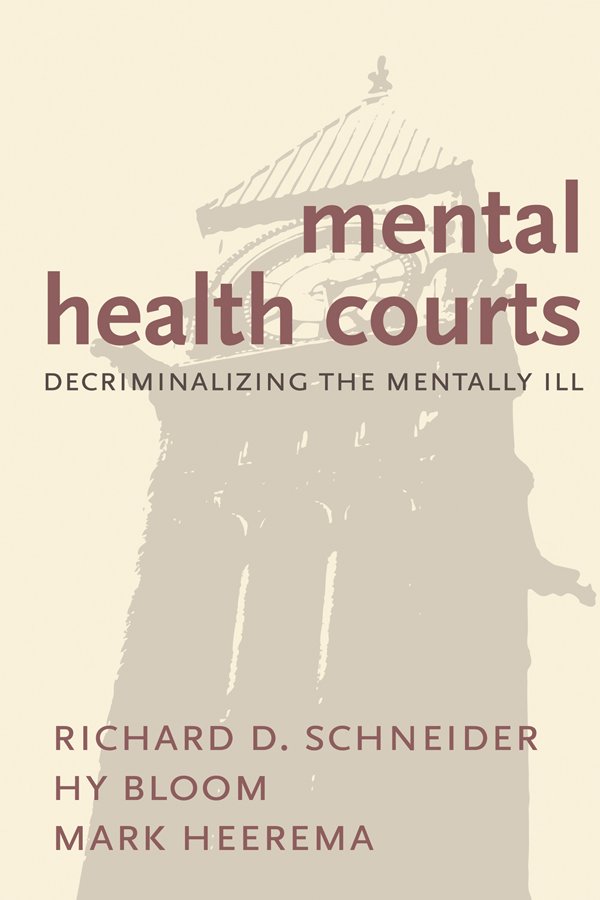-

Forensic Psychiatry RAPID Reference Series (RRS)
The Forensic Psychiatry RAPID Reference Series (RRS) is a carefully and professionally crafted set of 11 four-page (menu style) primers on core topics in forensic mental health of interest to both mental health and legal professionals, as well as to law enforcement, social service agencies, and correctional personnel. The RRS captures and condenses complex subject matter that straddles the interface of psychiatry and the law, including fitness to stand trial, criminal and diminished responsibility, automatism, toxic psychosis, psychopathy and personality disorders, and dangerousness and violence risk assessment. The series includes two primers focused on the paraphilias and sexual offending.
-

Fitness to Stand Trial: Fairness First and Foremost
Of all the issues that bring mental health practitioners and the criminal courts together, fitness to stand trial is by far the most common. In Canada, thousands of fitness assessments, psychiatric reports, fitness hearings, and verdicts of either “fit” or “unfit” to stand trial are rendered every year. For such a common event, one would be inclined to think that, for the most part, the law is uncontroversial; that most of the issues have been settled. Fitness to Stand Trial lays out the law as it is seemingly settled, and discusses several areas where the law is much less settled. What exactly is required of the accused in terms of their ability to think rationally? Does one need to be “fit to stand trial” in order to proceed with a bail hearing? Or, post-verdict, with sentencing? Can an otherwise unfit accused become “fit enough” with the assistance of counsel? Does the test for unfit to stand trial contain a prospective element? These and many other less-than-clear aspects of the fitness rules are explored fully in this new volume.
-

Mental Disorder and the Law
Canada's criminal courts have struggled to deal effectively with the increase in mentally disordered accused. In 2017, we mark the twenty-fifth anniversary of the proclamation of Bill C-30, which introduced landmark amendments to the Criminal Code as it pertains to mentally disordered accused. Since then, certain provinces have implemented mental health courts and “diversion” programs in an effort to connect the mentally disordered accused with the civil mental health care systems. Following the overwhelming success of its first edition, this book further examines the logical and temporal sequence of the issues a mentally disordered accused is likely to encounter from arrest to sentencing. This new edition of Mental Disorder and the Law aims to provide a succinct overview of the key topics that judges, Crown and defence counsel, and mental health providers face in their day-to-day work with mentally disordered offenders.
Following the success of its first edition, this book further examines the issues a mentally disordered accused is likely to encounter from arrest to sentencing. The book provides a succinct overview of the key topics that judges, Crown and defence counsel, and mental health providers face in their work with mentally disordered offenders.
-

Law and Mental Disorder: A Comprehensive and Practical Approach
Law and Mental Disorder: A Comprehensive and Practical Approach is an encyclopedic medico-legal overview of forensics issues. With 60 chapters, and over 50 contributors, the topics range from an introduction to the legal system for psychiatrists, to pharmacological treatments for sex offenders, to the pathways to conduct disorder amongst children. The book has been written for a professional audience of psychiatrists, resident psychiatrists, and related heath professionals as well as legal professionals (judges, lawyers), and justice system professionals.
An encyclopedic medico-legal overview of forensics issues. With 60 chapters, and over 50 contributors, the topics range from an introduction to the legal system for psychiatrists to the pathways to conduct disorder amongst children. The book has been written for an audience of psychiatrists as well as legal and justice system professionals.
-

Mental Health Courts
Mental health courts began as grassroots initiatives in the mid-1990s. Early versions found inspiration from the success of drug courts—an emerging brand of court dedicated to accused with substance addictions. On a very basic level, drug courts operate by offering accused a simple option: avoid serving a sentence for your drug-related offence by completing a drug-treatment program.
One of the first known programs to tackle the problem of mentally disordered accused in the criminal justice system was created in Toronto. The “Diversion of Mentally Disordered Accused” became a program which was part of the Crown Policy Manual in 1994. The success of these specialty courts, along with a growing awareness that the traditional criminal justice system was failing individuals with mental disorders, combined to legitimize the emergence of mental health courts.
In writing this book, the authors have sought to assist two groups of professionals primarily involved with these courts, namely, mental health care service providers and the various criminal justice professionals.
Part I of this book is an overview of the historical and theoretical foundations underlying the mental health court movement. It outlines the various factors which precipitated the emergence of these courts. Part II offers a thorough description of a typical mental health court in operation. In addition to describing the role of each mental health court team member, it goes on to provide guidance to those seeking to establish a mental health court. Part III analyzes the successes and failures of these courts and ends with a critical look at the long-term desirability of mental health courts.
The book gives an overview of the historical and theoretical foundations underlying mental health courts. It thoroughly describes a mental health court in operation, including the role of each court team member, and guides those seeking to establish such courts. The authors analyze the successes, failures and long-term desirability of these courts.

